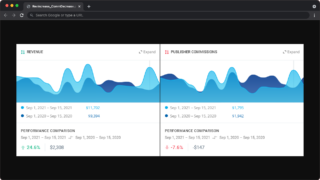At one point in time, affiliate marketing sat within a digital marketing organization. It contributed to the 360 degree marketing mix, yet was expected to have a relatively small budget compared to its counterparts of paid search, social, and display advertising. Affiliate marketing budgets were to cover the chosen affiliate network, commissions, and potentially an agency. In some cases the budget would also cover a full-time or partial FTE to run the affiliate program within the company.
With the convergence of commerce and content, this is all changing. In order to guarantee inclusion in some of the larger mass media publications, a paid placement, aka slotting fee, is required.
It wasn’t often that digital media budgets would also include dollars for paid affiliate placements. This was considered a “media spend”, which was only reserved for traditional digital ads. In the earlier years, the traditional affiliate marketing model was able to drive enough sales, while continuing to drive a positive ROI:
Offer > link on affiliate site > purchase by consumer > commission paid to affiliate
With the convergence of commerce and content, this is all changing. In order to guarantee inclusion in some of the larger mass media publications, a paid placement, aka slotting fee, is required. We recently talked about this on our podcast. Entities like Forbes, The Wall Street Journal, New York Times, and Condé Nast all have commerce divisions of their editorial arms. As consumers’ daily reading habits turn to these sources, they are also turning to them for education on what products to buy. It follows that these sites would turn this attention to additional revenue.
So, now what?
As more digital marketers take on managing affiliate programs, so must it follow that they allocate some online spending for these slotting fees.
As more digital marketers take on managing affiliate programs, so must it follow that they allocate some online spending for these slotting fees. At JEBCommerce, we’ve seen that even with the slotting fees, ROI for an affiliate program beats any other digital marketing practices by at least 2 to 1, pending the goal of that channel. For example, paid search is often considered a brand awareness play. The ROI of a CPC Search campaign may be typically lower than other areas, yet the traffic and awareness brought to a brand outweighs the need for a low ROI.
When it comes to paid display or even paid social, affiliate marketing’s ROI tends to be higher, even with some of the slotting fees. Paid social media channels have gone from a top of funnel activity to a middle to bottom of the funnel expectation and the revenue goals are getting more aggressive.
Next steps
These sites have embraced affiliate marketing as a growing and consistent revenue source. The trick is to educate your colleagues in how these publications are also affiliates.
At the onset of budgeting season, we recommend taking a look at all of your digital marketing arms, assigning goals to each. In addition, put together a “wish list” of where you’d like your brand to appear. I can guarantee that as you discuss these goals with your extended advertising, PR and digital marketing teams, you’ll find yourself adding one or more of the mass media publications to that grouping. These sites have embraced affiliate marketing as a growing and consistent revenue source. The trick is to educate your colleagues in how these publications are also affiliates.
At JEBCommerce, we are finding that the “wish list” of sites like Apple Insider, Travel and Leisure, or even Mashable come into play after Affiliate Marketing is approved as a brand marketing channel. Getting approval for paid placement dollars becomes more challenging as the expectation of slotting fees wasn’t discussed or introduced at the onset of an affiliate program.
Moving forward
The sooner a brand can understand how affiliate marketing complements other digital channels—along with budget needs—the better a brand can create a holistic marketing plan that covers where consumers are sourcing their content: from the larger mass publications to the traditional loyalty sites.






